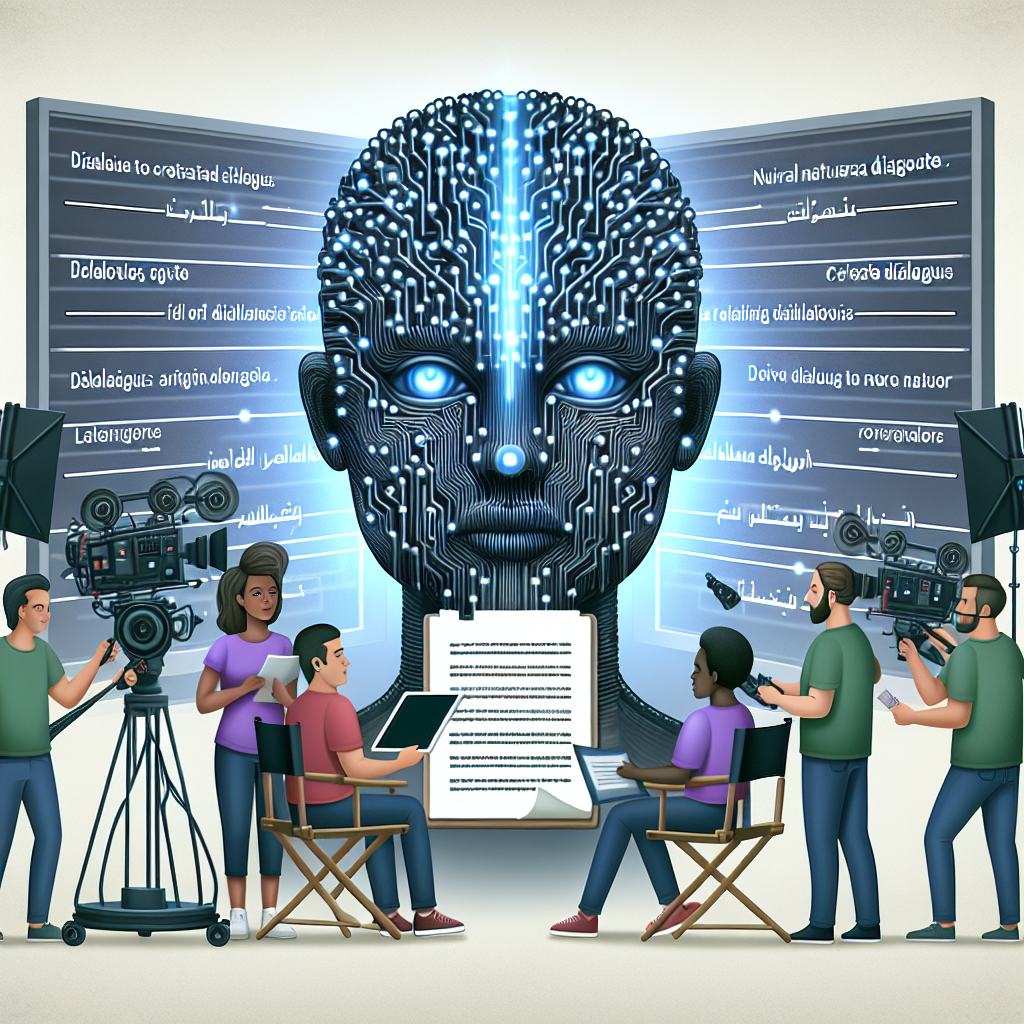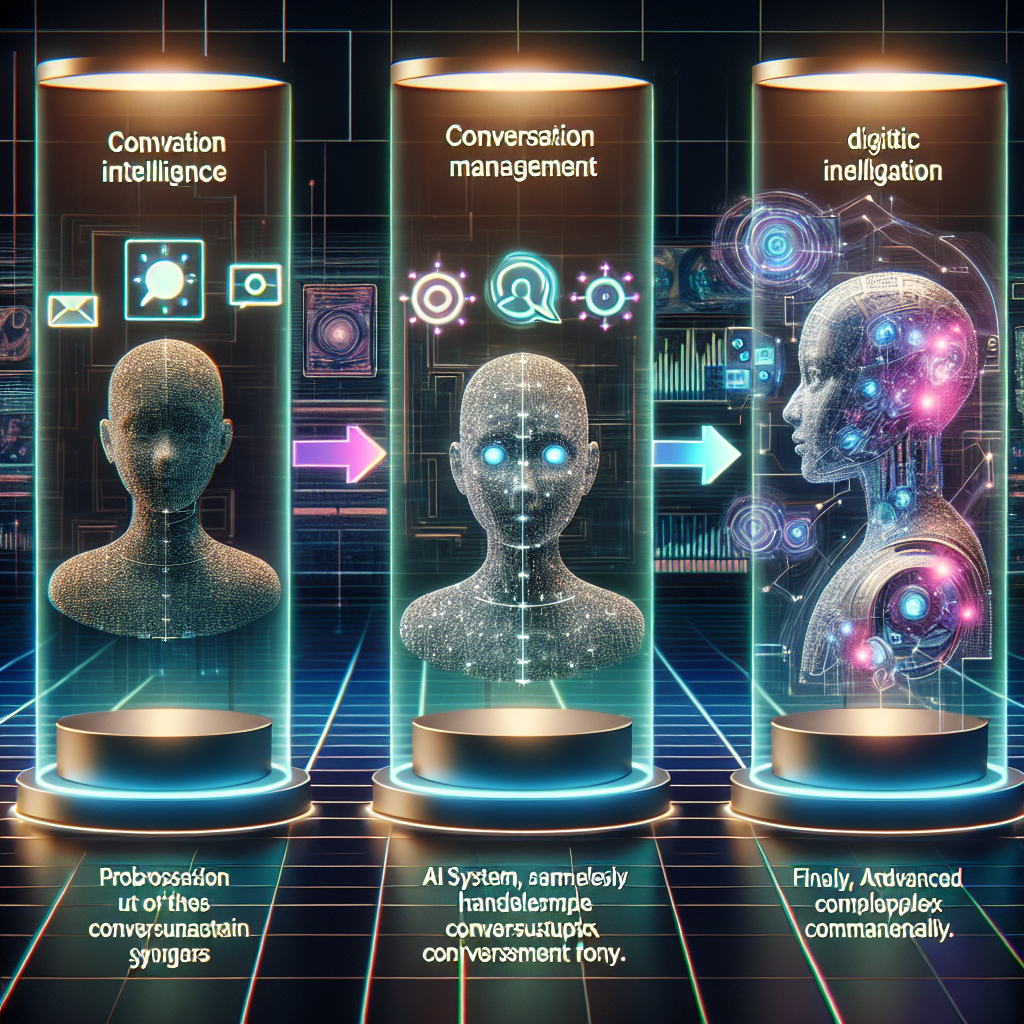
The dynamics of virtual communication and automation have drastically shifted in the last decade. Progress in Artificial Intelligence (AI) has enabled the seamless interaction between humans and machines, surpassing the traditional constraints of scripted dialogues. Despite these advancements, adhering to a specific script remains crucial in many industries. Script adherence becomes particularly vital in situations where accuracy, compliance, and standardization are mandatory, such as customer service, healthcare, and legal environments. This is where AI plays a significant role.

AI systems tailored to follow scripts can optimize the process by maintaining the necessary adherence while initiating an intuitive and natural conversation with users. It uses sophisticated algorithms to understand and respond to various inputs while staying within the boundaries set by the script. Thus, the technology makes it possible for AI systems to maintain a balance between script adherence and interactive dialogue.
Crafting AI systems that align with script adherence without hampering the semblance of a natural conversation involves multiple layers of AI. It requires technologies like Natural Language Processing (NLP), Speech Recognition, and Machine Learning. By integrating these, AI can understand, interpret, and respond to human speech more efficiently while preserving the integrity of the script.
As the use of AI continues to upsurge, the importance of its ability to adhere to scripts while maintaining natural conversations continues to grow as well. It's an exciting era for AI-driven communication systems, and this technological leap promises to optimize interaction while ensuring better operational efficiency and user experience.
In the evolving world of artificial intelligence (AI), a significant challenge faced by software developers is balancing script fidelity with natural engagement. This involves enabling AI to follow a predetermined script accurately, while simultaneously permitting it to adapt its responses to contribute to a natural, flowing conversation.
Imperative to achieving this dynamic balance are algorithms that bestow the AI with an understanding of context and the ability to make real-time decisions. These algorithms sift through countless variables derived from the person's speech or text input, identifying key details and patterns that feed the AI's comprehension of the conversation and its context.
A prime example of this is evident in AI-powered chatbots. Equipped with Natural Language Processing (NLP) and machine learning capabilities, these chatbots are trained to analyze and comprehend human language. Their scripts, therefore, serve as a guide, not a leash, enabling the chatbot to flexibly adapt its responses based on the context and flow of the conversation.
Further to this, AI can be taught to handle Turing Test-like scenarios. Named after the renowned computer scientist Alan Turing, this test gauges an AI's ability to mimic human behavior convincingly. In recent years, AI capabilities have advanced substantially to passing these tests, exhibiting their ability to maintain both high script adherence and fluid, engaging conversation.
Through employing sophisticated algorithms that account for conversation context and real-time adaptability, AI capabilities now tread the thin line between script conformity and maintaining conversational authenticity. In doing so, they maximize user engagement, foster deeper relationships, and deliver superior user experiences.
Artificial Intelligence (AI) has proven monumental in various sectors, most notably in customer service. Specifically, the use of AI has greatly improved the texture of script adherence in ensuring that telemarketers maintain natural conversations. How possible is this? Two fantastic technologies underpin this development: Natural Language Processing (NLP) and Machine Learning models.

NLP is a subfield of AI that concentrates on the interaction between humans and computers using natural language. The ultimate goal of NLP is to read, decipher, comprehend, and make sense of the human language in a valuable way. To learn more about NLP, follow this link.
On the flip side, Machine Learning are models that learn and improve from experience. They discern patterns in data and then predict or make decisions in new circumstances. Machine Learning is what powers most of the AI we see today. For a more robust discussion, click here.
Combined, these two technologies allow AI to analyze vast swathes of conversational data, understand it, and then generate human-like responses. Not only does this help maintain natural conversation, but it also optimizes script adherence by ensuring that critical points are consistently hit in the conversation.
Consequently, businesses can expect their agents to maintain high levels of script adherence while still having natural conversations that evoke a positive emotional response from the customer. The use of NLP and Machine Learning has effectively fused efficiency and empathy in telemarketing.
Optimizing script adherence in conversational AI systems has become increasingly relevant, as industries navigate the balance between staying compliant and maintaining natural dialogues. Let's focus on two case studies where businesses have successfully leveraged AI technology.
In the first instance, Versay Solutions, a communication software provider, introduced an AI system to ensure adherence to customer service scripts. Their challenge was maintaining user engagement over the course of a call, which often led to deviations from the pre-planned script.
Versay incorporated machine learning and natural language processing (NLP) to analyze real-time conversations, which enabled immediate feedback on script adherence. The result not only improved compliance, but also enhanced the fluidity of conversations - a significant stride in customer satisfaction.
Afiniti, a leading tech firm specializing in strategic AI-driven call matching, faced a similar issue. The company utilizes sophisticated algorithms to pair customers with suitable service reps, and required a system that could ensure all reps stuck to essential dialogue aspects amidst dynamic conversations.
Afiniti's AI solution was geared towards recognizing keywords and phrases in real-time. When a rep veered off-script, the system would categorize this as a potential compliance risk and flag it for review. In the end, they successfully achieved a balance between scripted dialogue and organic interaction, boosting their overall customer experience.
In conclusion, these cases accentuate the pivotal role of AI in optimizing script adherence while retaining human-like conversation flow. By incorporating AI solutions, businesses can profoundly improve customer interactions, avoid potential compliance pitfalls, and achieve substantial business outcomes.
As society progresses toward an increasingly tech-reliant future, the role of Artificial Intelligence (AI) in enhancing various sectors is becoming more pronounced. One intriguing scope of this technological advancement is in optimizing script adherence while maintaining the integrity of natural conversation. This trend of enhancing and machine-learning assisted communication presents numerous prospects for innovation, leading to more seamless and human-like interactions.

Over the years, AI has transitioned from reading pre-programmed responses to decoding complex, human-like conversations. This evolution has been made possible through a technology known as Natural Language Processing (NLP). However, the journey of AI doesn't stop here. Future developments in this field aim to deepen AI's understanding of human conversation, moving beyond literal interpretation to contextual understanding. This could potentially elevate the quality of interactions, ensuring AI systems adhere to their script while incorporating the subtleties of human communication.
Big Data and Machine Learning are two other significant components set to change the landscape. Infusion of these technologies allows AI systems to learn from past interactions, adjust in real-time and predict future communication patterns. While adhering to essential scripting guidelines, these advancements also would ensure a more personalized and adaptive conversational experience. Technologies such as neural networks would be central to this transformative journey.
Lastly, upcoming trends may also see the integration of affective computing to AI systems. With the capability to understand, interpret, and simulate human emotions, this feature can revolutionize AI's interaction with users. By acknowledging emotions and responding accordingly, AI can provide a truly natural and empathetic conversation.
Therefore, AI's future in optimising script adherence and enhancing conversational abilities promises to revolutionize human-machine interactions. With continuous explorations and innovations, AI's conversational prowess is set to transcend the barriers between machines and emotions.
Start your free trial for My AI Front Desk today, it takes minutes to setup!








